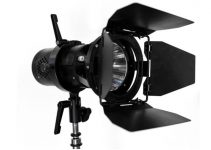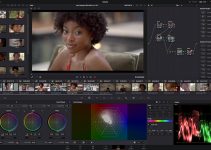Mastering the art of framing and composition is a paramount skill for every seasoned cinematographer, but if you’re just starting out or simply want to enhance your captured footage, Ryan Connolly of Film Riot brings some practical tips and tricks that might help you to nail your shots in post-production.
From using framing guides to fine-tuning your framing, you’ll learn how to fix some of the common mistakes newbie filmmakers make when shooting. Polishing up and re-framing shots has become ubiquitous practice even for the biggest productions, so there is no actual reason why you shouldn’t put some extra time and effort to improve the visual aesthetics of your projects by using these simple tricks.
First and foremost, use framing guides. The widescreen aspect ratio will not only stylise your videos and make them look more cinematic, but it will also give you options to re-frame your shots in post. If your camera doesn’t provide framing guides you can always create your own by cutting two strips of gaff tape and sticking them on your camera LCD as a guide.
Even though this old-school trick isn’t the most practical option, it’ll certainly do the job. There are many ways to figure out where exactly to put those strips, but the easiest is to film your TV set that has those bars on it, match the frame perfectly and then slap the lines in the right position. If you don’t have time to set your markers, just make your shot a bit wider than you actually want it to be, so that you’ll be able to add those bars later in post.
Using this method will help you not only to re-frame your shots by moving them up or down thus utilizing the extra space behind the bars, but you can also keyframe the entire shot by enhancing the captured camera movement, or create entirely new motion from scratch. Additionally, you can re-frame your shots even when you’re not using framing guides. Just make sure that you are shooting at a higher resolution than the one you plan to deliver.
This workflow will allow you to refine your shots without any image degradation which could make the trick even more appealing and powerful asset of your filmmaking skill set. Ultimately, you can always adjust and improve your shots later in post regardless of the aspect ratio and resolution you’re shooting at. Just be careful not to overdo it and remember that the best way to film visually stunning images is by mastering the art of framing and composition in the first place.
[source: Film Riot]
Disclaimer: As an Amazon Associate partner and participant in B&H and Adorama Affiliate programmes, we earn a small comission from each purchase made through the affiliate links listed above at no additional cost to you.




